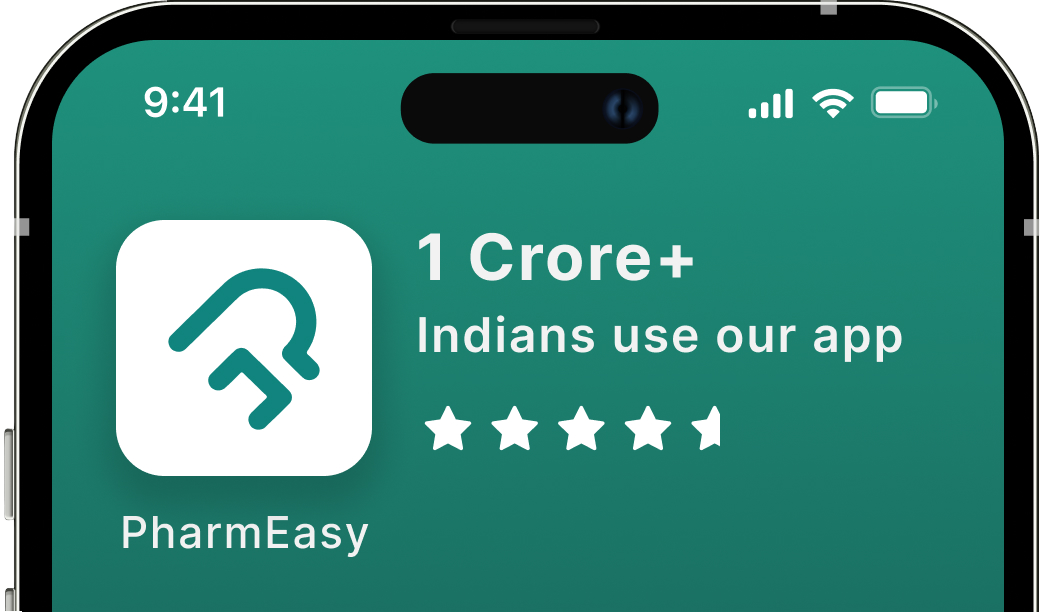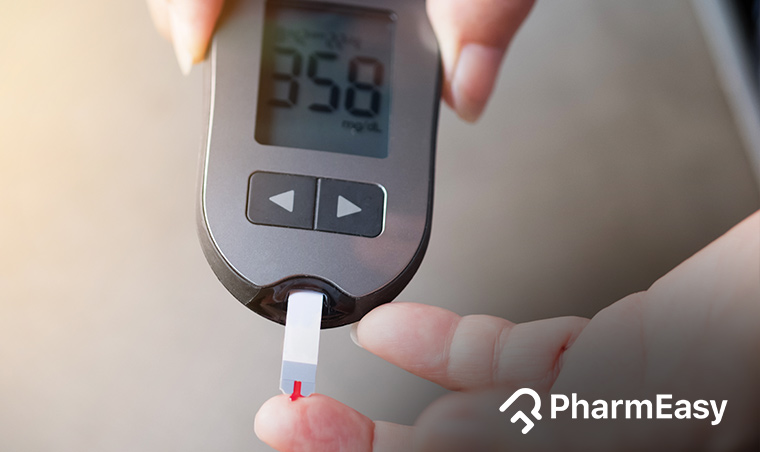Everything About Blood Sugar Levels and Ranges You Must Know
By Shantanu Sodhi +2 more

Download PharmEasy App




Register to Avail the Offer
Send OTPBy continuing, you agree with our Privacy Policy and Terms and Conditions
By Shantanu Sodhi +2 more
Every diabetes patient either faces high blood sugar levels or low blood sugar levels from time to time. High blood sugar levels are known as hyperglycemia, while low blood sugar levels are called hypoglycemia.

For a person with diabetes, it’s exceedingly vital to check blood sugar levels every now and then. Read on to know the normal blood sugar levels in the human body.
Table of Contents
For individuals with diabetes, the normal blood glucose range before eating should be 80-130 mg/dL. After 1-2 hours of eating a meal, the blood sugar level range should be less than 180 mg/dL.
A reading of over 180 mg/dL after two hours comes under the high blood sugar level range. On the other hand, a blood sugar level under 70 mg/dL is low.
I routinely advise all my diabetic patients to carry a chocolate with them at all times because low blood sugar is very dangerous than high blood sugar and should be corrected immediately by taking a sweet or glucose.
Dr. M.G. Kartheeka, MBBS, MD
High blood sugar or hyperglycemia is an exceedingly common condition. It can be caused due to stress or excessive eating of carbs. It is vital for people with diabetes to monitor blood sugar levels and look out for the signs to take timely action. Here are some of the other sugar level increase symptoms.
Here are a few ways of preventing high blood sugar:
Dietary and lifestyle modifications are very important apart from the recommendations of oral and injectables for control of blood sugar levels. Regular consultation with your physician at least once a year is highly recommended.
Dr. Ashish Bajaj, M.B.B.S., M.D.
If you have persistent sugar level increase symptoms, consult a doctor immediately. They will modify your meal plan, adjust the medical regime and physical activity routine.
Also known as hypoglycemia, blood sugar levels can go down when a diabetic person doesn’t consume sufficient food. Read on to know some of the other symptoms of low blood sugar.
You may show any of these symptoms if your blood sugar drops suddenly. In many cases, people also suffer from low blood sugar even though their levels are higher.
For instance, if the blood sugar level was 300 mg/dL for a week and suddenly lowered to 100 mg/dL, it can also be a symptom of low blood sugar.
Here are some of the ways to prevent low blood sugar problems.
Fast-acting carbohydrates such as juices, glucose tablets and regular soda are effective ways of controlling low blood sugar. If an individual cannot consume food or drinks, make sugar paste and give it to him/her.
By recognising the sugar level increase symptoms mentioned above, diabetes patients can avoid medical emergencies like diabetic ketoacidosis. The sooner an individual understands these symptoms, the sooner they can test and avoid critical situations.
A potent way of managing your diabetes is to keep a clear target range. Monitoring blood sugar levels can help eliminate long term diabetes complications.
1. Sugar-Free Foods
While such foods are free from sugar, they still contain a lot of carbohydrates. It is essential to check the nutritional facts before digging into sugar-free foods. For instance, Sorbitol and xylitol are sugar-free alcohols capable of boosting your sugar levels.
2. Sports Drinks
The goal of sports drinks is to replenish your energy levels quickly. That said, plenty of it contains as much sugar as soda. So they can increase your blood sugar levels.
3. Yoghurt
Many types of yoghurts have healthy bacteria. They help enhance digestion and facilitate the balancing of blood sugar levels. However, some contain added sugars that can affect your normal blood glucose level.
4. Dried Fruits
While fruits are healthy, dried fruits contain a lot of carbohydrates in a small pack. For instance, three dates have 15gms of carbs. That is why they can cause an upswing in your blood sugar levels.
While high blood sugar and low blood sugar are severe conditions, they can be controlled by constant glucose monitoring and avoiding certain habits. To make sure that your average blood sugar level is maintained, you must keep a record of it all. It’d allow your doctor to modify the treatment, for instance, the amount of insulin to take, as and when needed. Plus, you’d be able to take the right actions to control your diabetes by monitoring glucose.
Also Read: Is Sucralose Bad for You? Unraveling the Truth Based on Research
Disclaimer: The information provided here is for educational/awareness purposes only and is not intended to be a substitute for medical treatment by a healthcare professional and should not be relied upon to diagnose or treat any medical condition. The reader should consult a registered medical practitioner to determine the appropriateness of the information and before consuming any medication. PharmEasy does not provide any guarantee or warranty (express or implied) regarding the accuracy, adequacy, completeness, legality, reliability or usefulness of the information; and disclaims any liability arising thereof.
Links and product recommendations in the information provided here are advertisements of third-party products available on the website. PharmEasy does not make any representation on the accuracy or suitability of such products/services. Advertisements do not influence the editorial decisions or content. The information in this blog is subject to change without notice. The authors and administrators reserve the right to modify, add, or remove content without notification. It is your responsibility to review this disclaimer regularly for any changes.
Diabetes has to be taken very seriously
Comments